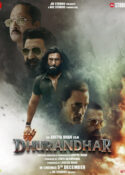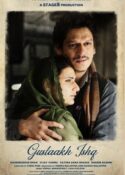 Writer-Director Mehran Amrohi, who has struggled for ten years to finally get his directorial debut into movie theatres, deserves a standing ovation for his minimalist masterpiece.
Writer-Director Mehran Amrohi, who has struggled for ten years to finally get his directorial debut into movie theatres, deserves a standing ovation for his minimalist masterpiece.
Chidiya is a gem of a film, an instant classic, if you will. It conveys what the director so succinctly describes as “the joy in scarcity” with such an austere stare at neo-realism, I immediately want to put him up there with the masters of neo-realism, Vittorio de Sica and Satyajit Ray.
The theme of “joy in scarcity” characterized de Sica’s Bicycle Thieves as much as Ray’s Pather Panchali. Echoes of past greatness do not colour the contemporary texture and the lucidly lensed chawl life of Amrohi’s simple yet strong supple saga of the survival of the frailest section of our society.
Amrohi lets his two young protagonists, Shanu and his kid brother Bua, played with wondrous spontaneity by Svar Kamble and Ayush Pathak (the boys are so brilliant they could teach our Filmistan’s superstars a thing or two about how not to act as though you’re acting), have their say in the incredibly kind world of deprivation that they inhabit.
There are no villains, no nasty characters in Chidiya. Even when someone snaps into an acrimonious mode, the mood of assertive positivity is restored in no time. This is a universe freed of greed, hellbent on staying afloat even if the struggle to do so seems incommensurate with destiny’s tyranny.
If Shanu and Bua’s universe seems so denuded of despair, it is because the narrative furnishes their arid existence with splashes of joy. Miraculously upbeat, the chawl becomes a microcosm of hope and resilience without any punctuated dramatic moments.
The soundtrack is largely liberated of street-signed background nudges. Whenever a musical interlude or a song comes on, it is so organic that we don’t feel we are being led on to feel empathy for the eminently likeable characters.
I have not seen so many convivial, self-contained characters in one film before. Whether it is the young boys’ uncle Bali or their eternally hassled simple mother Vaishnavi (watch her when the uncle teases her about the boys’ first trip away from her), or the tea seller Suraj at the film studio where the two boys abandon their childhood to become premature wage-earners: each character has tremendous takeaway value, thanks to the unassuming spontaneity with which they are played by Vinay Pathak and Amrutha Subhash and Brijendra Kala.
But my favourite character in the film is Taj, the physically disabled tailor played a marvellous mix of perkiness and playfulness by Inaamulhaq whose saree-blouse ribaldry illustrates what the film says with such sparkling validation: if life serves you lemons make yourself sugarfree lemonade.
I would like to see an entire film on this tailor-made character, Taj. I would also like to see our two young heroes, Shanu and Bua, arrive at the end of their rainbow: the badminton court, even if the ‘b’ word is never mentioned.
There is hope, magic, passion, and grace in the underdog’s saga. I don’t know why a moment such as the one where Shanu buys an ice cream for the little girl whose ice cream he has snatched away all through moved me so much. Could it be the underlining outflow of empathy that runs through the narrative, like a stream in an arid mountain path?
An epic quality runs through the film even as the characters struggle to stay afloat. That one moment when Bali hugs his two nephews as all three men remember Mangesh, the missing link in their world of famished longings, serves as the most articulate gesture of joy in scarcity.









